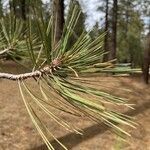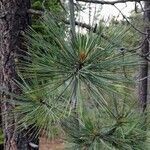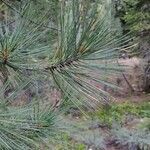A tree like Pinus ponderosa but the needles are shorter and stiffer and the cones are much larger. It is an evergreen tree which is broadly cone shaped and grows to 40 m high. The leaves are needle like and rigid. They are 25 cm long and occur in clusters of three. They are blue-green and on stout shoots.




